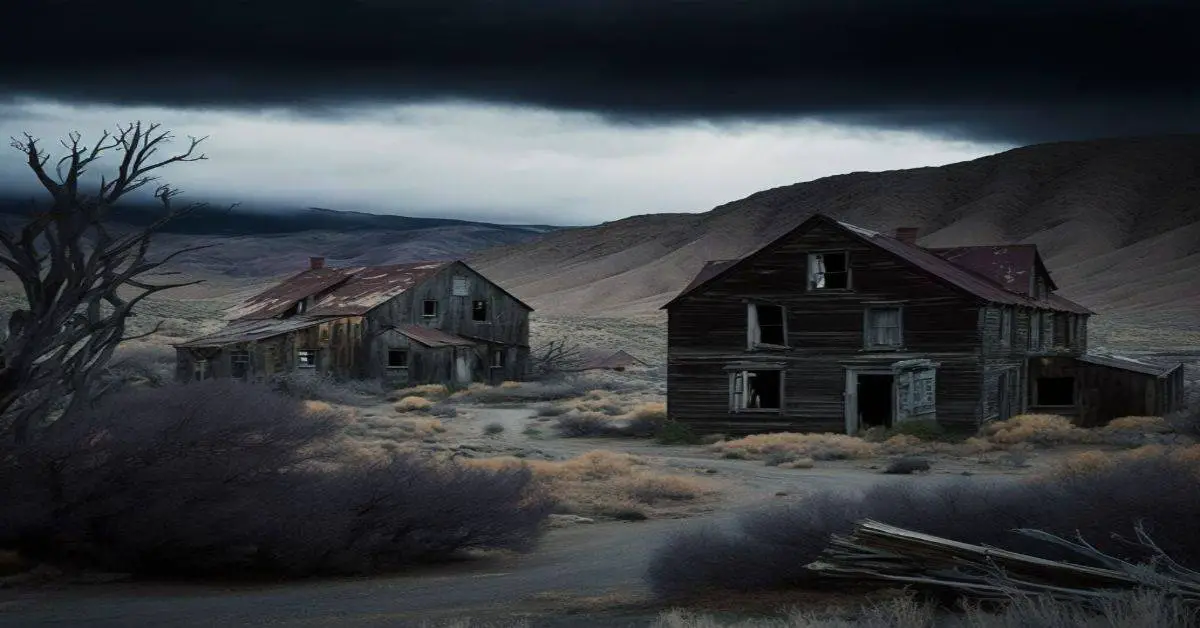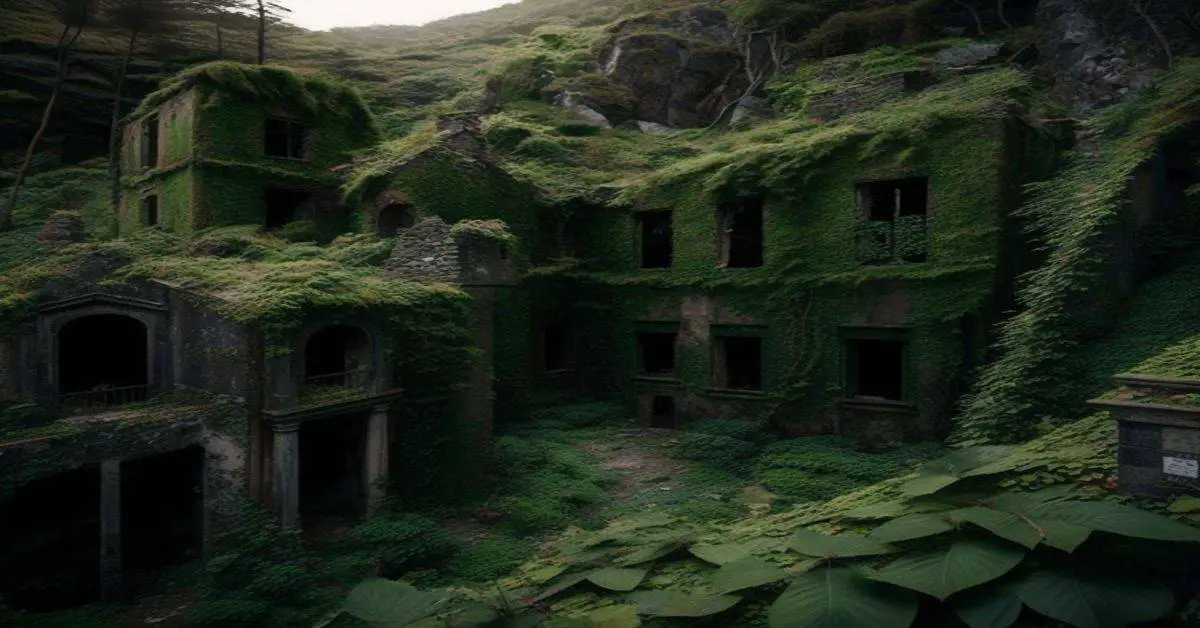Sutro, Nevada is a small ghost town with a rich history that attracts visitors interested in the state’s haunted past. The town was named after Adolph Heinrich Joseph Sutro, a Prussian emigrant who envisioned a horizontal tunnel to revolutionize the mining industry. Despite facing opposition from the Bank of California, Sutro’s vision eventually came to fruition, but not without tragedy occurring at the Yellowjacket mine in 1869.
Today, Sutro remains mostly on private property and is only open to the public one day a year in the summer, making it a rare and unique destination for those interested in exploring Nevada’s haunted past.
Located in western Nevada, Sutro experiences a desert climate with hot summers and mild winters. The town’s history is closely intertwined with the mining industry, as it was built to support the Yellowjacket mine, one of the area’s largest and most profitable mines during the late 19th century. The mining industry heavily influenced Sutro’s construction and development, and many of its buildings and structures were built to support the miners and their families.
Despite the town’s small size and relative obscurity today, Sutro’s history is closely tied to the development of the mining industry in Nevada and its lasting impact on the state’s economy and culture.
Key Takeaways
- Sutro is a small ghost town in Nevada with a rich history closely tied to the mining industry.
- The town was named after Adolph Heinrich Joseph Sutro, who revolutionized the industry with his horizontal tunnel project.
- Visitors must obtain permission to explore the remains of Sutro, including a few standing buildings such as a hotel and houses.
- Completing the Sutro Tunnel marked a significant milestone in Nevada’s mining history, despite facing numerous challenges such as a devastating fire at the Yellowjacket Mine.
Location and Weather
Sutro, a Nevada ghost town linked to Adolph Heinrich Joseph Sutro’s ambitious plan to construct a horizontal tunnel for miners, is located in a region with mild winters and warm summers, making it a desirable destination for those who wish to explore privately.
To visit Sutro, it is necessary to inquire locally for permission to explore private property, as much of the town is inaccessible to the general public. However, for those who are granted access, exploring the remains of Sutro can be a fascinating experience, offering a glimpse into the past of a once-thriving mining town.
While Sutro itself is a relatively small town, there are nearby attractions that visitors may wish to explore. For example, the city of Reno is just a short drive away and offers a wide variety of entertainment options, including casinos, restaurants, and shopping.
Lake Tahoe, one of the most beautiful natural wonders in the United States, is also nearby and a popular destination for outdoor enthusiasts. Whether one is interested in history, hiking, or simply enjoying the natural beauty of the area, Sutro and its surrounding region have much to offer.
History and Construction
The tunnel project initiated by Adolph Heinrich Joseph Sutro to recover gold and silver from quartz faced a significant obstacle in the form of the Bank of California’s opposition. However, Sutro’s persistence led to the tunnel’s construction, which began on October 19, 1869, and was completed 13 years later at a cost of $5 million dollars.
The tunnel, over 4 miles in length, was a monumental achievement, providing fresh air and drainage for miners and revolutionizing the mining process in Nevada. Sutro’s impact on the mining industry cannot be overstated, and his legacy continues to be felt throughout the state.
Despite its impressive construction, the Sutro Tunnel faced numerous challenges, including a devastating fire at the Yellowjacket Mine in 1869 that claimed the lives of 45 miners. However, Sutro capitalized on this tragedy to promote his tunnel plan, which he believed would prevent future disasters.
Completing the Sutro Tunnel marked a significant milestone in the history of mining in Nevada, and its legacy continues to be felt today. Although much of the town of Sutro is on private property, those who can visit will find a fascinating glimpse into Nevada’s haunted history.
Visiting Sutro Today
A journey to the remnants of the once bustling town built around the Sutro Tunnel is a unique opportunity to delve into the rich mining past of the Silver State. However, much of the town is situated on private property, and visitors must obtain local permissions before exploring the area.
Despite this, many adventurous travelers and history buffs find the effort worthwhile, as they get to witness the remains of a place steeped in history and tragedy.
Visitors to Sutro can see a few buildings that still stand, including a hotel and a few houses. However, they need to be aware that the town is not open to the public year-round, with only one day a year in the summer when visitors are allowed to explore the area.
Given the town’s historical significance, travelers are encouraged to inquire locally for permission to explore on their own, as it is a worthwhile experience for anyone interested in the mining history of Nevada.
Frequently Asked Questions
What other industries, besides mining, were present in Sutro during its heyday?
Sutro’s non-mining industries included agriculture, lumber, and transportation. The town played a significant role in transportation, serving as a hub for stagecoaches and railroads. This economic diversity contributed to the town’s growth during its heyday.
Are there any rumors or legends about paranormal activity in Sutro?
According to local lore, ghost sightings have been reported in Sutro, Nevada. Paranormal investigations have also been conducted, but skeptics remain unconvinced.
How did the Bank of California attempt to thwart Sutro’s tunnel plan?
The Bank of California opposed Adolph Sutro’s plan to build a horizontal tunnel for fresh air and drainage for miners. The bank’s opposition was due to their investment in a competing railroad company which the tunnel’s construction would have negatively impacted.
Were any famous individuals associated with Sutro or its mining operations?
Several notable figures were associated with Sutro’s mining operations, including Adolph Sutro himself, who revolutionized the recovery of precious metals from quartz. Other prominent individuals include John P. Jones, Collis P. Huntington, and James G. Fair. Sutro’s mining industry played a significant role in the history of Nevada and the American West.
Has any archaeological or preservation work been done on Sutro’s remaining buildings and structures?
Archaeological significance and preservation efforts for Sutro’s remaining buildings and structures have not been widely reported. However, given the town’s historical importance, such efforts may be warranted to ensure the preservation of this unique piece of American history.


